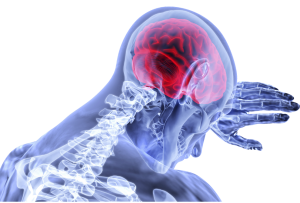STUDY HYPOTHESIS AND DESCRIPTION
The further understanding of the post-viral fatigue phenomenon that many HSE patients present with could give new insights in the initial episode of Myalgic Encephalomyelitis/ Chronic Fatigue Syndrome (ME / CFS) since very many of the patients (70-80%) reports on an initial infection (eg mononucleosis) in the onset of the disease.
Our findings could give predictive evidence of long-term neurocognitive outcome in HSE, and suggest a causative chain of events where brain tissue damage increases the risk of subsequent prolongation of CSF inflammation and post-viral fatigue. The data could provide guidance for a future intervention study of immunosuppressive therapy administered in the recovery phase of HSE and other viral infections with neurological sequelae.
OBJECTIVES
 A total of 50 adult/adolescent HSE patients were included in a prospective cohort. Study subjects underwent repeated plasma/CSF sampling (Day 0, 14 and 90) and brain MRI the first 3 months along with cognitive assessment by Mattis Dementia Rating Scale (MDRS) during 24 months. Initially, CSF samples will be analyzed for biomarkers of brain injury, inflammation and synaptic damage using proteomics (both MS-based screening and targeted Olink based panel). This could be complemented with a metabolic profiling of the plasma concentration of around 550 targeted analytes in plasma. The pre-defined primary analysis will be the correlation of CSF biomarkers and MDRS followed by evaluation of post-viral fatigue and ME.
A total of 50 adult/adolescent HSE patients were included in a prospective cohort. Study subjects underwent repeated plasma/CSF sampling (Day 0, 14 and 90) and brain MRI the first 3 months along with cognitive assessment by Mattis Dementia Rating Scale (MDRS) during 24 months. Initially, CSF samples will be analyzed for biomarkers of brain injury, inflammation and synaptic damage using proteomics (both MS-based screening and targeted Olink based panel). This could be complemented with a metabolic profiling of the plasma concentration of around 550 targeted analytes in plasma. The pre-defined primary analysis will be the correlation of CSF biomarkers and MDRS followed by evaluation of post-viral fatigue and ME.
Donate your appreciated stock directly to OMFCA and you can receive an immediate income-tax deduction for the fair market value of the securities on the date of transfer (even if you originally paid much less for them).
OMFCA sells your securities and uses the proceeds to support our mission. You also do not pay capital gains tax on the transfer when the stock is sold. Giving appreciated stock can be more beneficial than giving cash. The “cost” of your gift is often less than the deduction you gain by making it. In advance, thank you for making this generous gift.
Gifting of Stock Instructions
Brokerage/Investment Firm: TD Waterhouse
Name on the Account: Open Medicine Foundation Canada
Account Number: 20LRHLA
OMFCA Canadian Revenue Agency (CRA) charity registration #: 74926 5518 RR0001
OMF Canada Registered Address:
Open Medicine Foundation Canada
2987 Baynes Road, Victoria, BC V8N-1Y4
Phone Number: 416-848-0055
Please speak to your personal tax advisor and then call OMFCA at 650-242-8669 to notify us of your donation or with any questions.